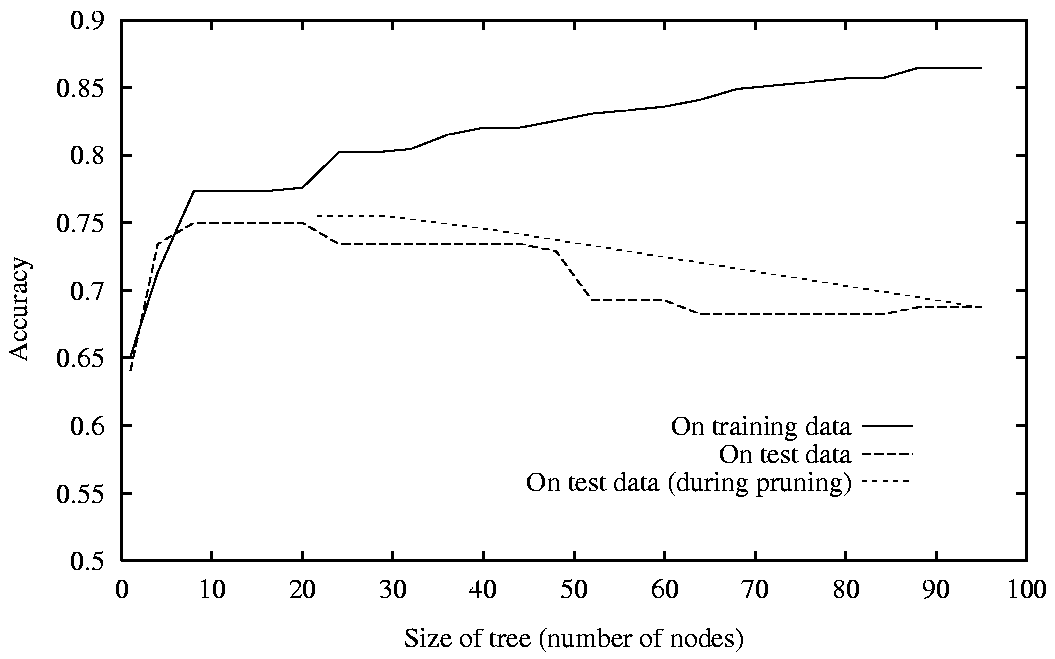- Has been used for everything from medical diagnosis to
assessing the credit risk of loan applications.
- Example: Tree to predict C-Section risk
- Learned from medical records of 1000 women.
- Negative examples are C-sections
[833+,167-] .83+ .17-
Fetal_Presentation = 1: [822+,116-] .88+ .12-
| Previous_Csection = 0: [767+,81-] .90+ .10-
| | Primiparous = 0: [399+,13-] .97+ .03-
| | Primiparous = 1: [368+,68-] .84+ .16-
| | | Fetal_Distress = 0: [334+,47-] .88+ .12-
| | | | Birth_Weight < 3349: [201+,10.6-] .95+ .05-
| | | | Birth_Weight >= 3349: [133+,36.4-] .78+ .22-
| | | Fetal_Distress = 1: [34+,21-] .62+ .38-
| Previous_Csection = 1: [55+,35-] .61+ .39-
Fetal_Presentation = 2: [3+,29-] .11+ .89-
Fetal_Presentation = 3: [8+,22-] .27+ .73-



